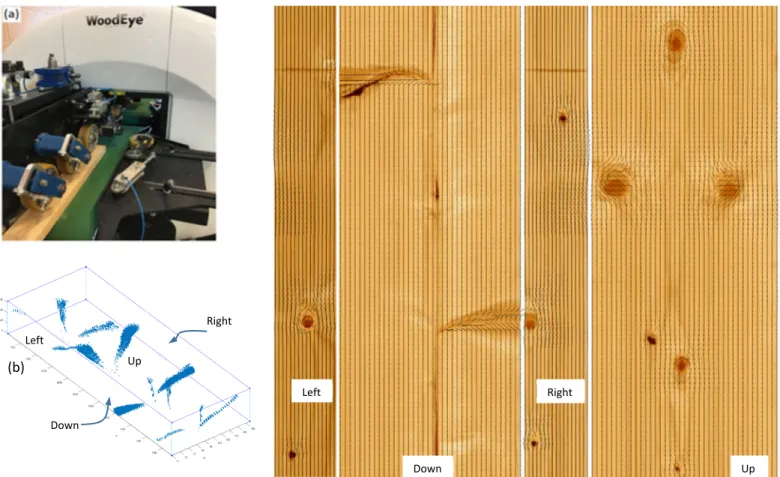ISBN: 978-91-88898-64-7
65
Modeling fiber direction around knots in structural timber
Min Hu†*, Anders Olsson†, Jan Oscarsson†
†Department of Building Technology, min.hu@lnu.se
anders.olsson@lnu.se
, jan.oscarsson@lnu.seOne of the most important properties that determine strength and stiffness of structural timber is local fiber direction. Industry scanners, which are nowadays commonly used in sawmills, are able to sample such data of timber surfaces in a resolution of a couple of millimeters. In the last years a comparably accurate grading method, which relies on knowledge of fiber direction within timber boards, was developed [1]. However, in this method interior fiber directions are determined in a rather unsophisticated way, not taking location of pith, and morphology and orientation of knots into account. Attempts to improve the modelling of interior fiber direction have been made [2, 3], but none of these utilize an optimized combination of fibre directions from scanning and mathematical modelling. Nor were these models based on accurate models of morphology of knots. The aim of the present research is to develop a 3D fiber angle model for timber boards, which utilizes fiber data of surface laser scanning, knowledge of pith of log and 3D reconstruction of knots within timber boards. The purpose is to determine fiber directions within timber volume more accurately, which can in turn contribute to the development of machine strength grading methods more accurate than those available today. For the modeling of fiber direction, a 3D fiber model valid for a single knot [4] is employed and extended to be applicable for full-size timber boards including multiple knots that are interactive on determination of fiber directions. For information of the pith location, morphology and orientation of knots, a timber board of Norway spruce in dimension 64 × 190 × 3400 mm, was thoroughly investigated in laboratory by repeatedly alternate from laser scanning using a WoodEye 5 scanner and planing by a thickness planer. In such a way, in-plane fiber direction of every 2 mm and surface images of every 1 mm in the board thickness direction were obtained. This data was also used for calibration and verification of the proposed fiber angle model.
Figure 1: (a) A WoodEye 5 scanner. (b) 3D reconstruction of knots and (c) Modelling results of fibre direction on timber surfaces.
References
[1] A. Olsson and J. Oscarsson: Strength grading on the basis of high resolution laser scanning and dynamic excitation: a full scale investigation of performance. European Journal of Wood and Wood Product, 75 (2017), 17-31. [2] M. Hu, A. Olsson, M. Johansson and J. Oscarsson: Modelling local bending stiffness based on fibre directions in
sawn timber. European Journal of Wood and Wood Product, 76 (2018), 1605-1621.
[3] M. Lukacevic, G. Kandler, M. Hu, A. Olsson and J. Füssl: A 3D model for knots and related fiber deviations in sawn timber for prediction of mechanical properties of boards. Material and Design, 166 (2019).
[4] C. Foley: Modeling the effect of knots in structural timber. Dissertation, Lund University, 2003. Left Down Right Up Up (b) Left Down Right Up
